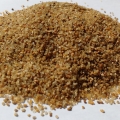Papyrus, Ancient Egyptian Writing Material
Papyrus is really a product just like thick paper which was found in ancient times as being a composing surface.
It had been produced from the pith regarding the papyrus plant, Cyperus papyrus, a wetland sedge.
Papyrus (plural: papyri) may also make reference to a document written on sheets of these product, joined up with side that is together side and rolled up in to a scroll, an earlier type of a guide.
It really is first recognized to have already been utilized in ancient Egypt (at the very least dating back to the Dynasty that is first) as the papyrus plant ended up being when numerous throughout the Nile Delta.
It absolutely was additionally utilized through the Mediterranean area plus in the Kingdom of Kush.
Aside from a writing product, ancient Egyptians used papyrus within the construction of other items, such as reed boats, mats, rope, sandals, and baskets.
It absolutely was very first manufactured in Egypt dating back to the millennium that is fourth.
The first archaeological proof of papyrus ended up being excavated in 2012 and 2013 at Wadi al-Jarf, a historical harbor that is egyptian in the Red Sea coastline. These papers date from c. 2560–2550 BCE (end regarding the reign of Khufu).
The papyrus rolls describe the past several years of building the truly amazing Pyramid of Giza. In the 1st centuries BCE and CE, papyrus scrolls gained a competing as a surface that is writing the type of parchment, that has been ready from animal skins.
Sheets of parchment were folded to form quires from where book-form codices had been fashioned. Early Christian writers quickly adopted the codex kind, as well as in the Grжco-Roman world, it became typical to cut sheets from papyrus rolls to make codices.
Codices had been a marked improvement regarding the papyrus scroll, while the papyrus had not been pliable sufficient to fold without breaking and a lengthy roll, or scroll, ended up being expected to produce large-volume texts.
Papyrus had the benefit of being fairly low priced and simple to make, nonetheless it ended up being delicate and vunerable to both dampness and dryness that is excessive. Unless the papyrus ended up being of perfect quality, the composing surface ended up being irregular, together with array of media that would be utilized ended up being additionally restricted.
Papyrus ended up being changed in European countries by the cheaper, locally produced services and products parchment and vellum, of considerably greater durability in moist climates, though Henri Pirenne’s connection of its disappearance utilizing the Muslim conquest of Egypt is contested.
Its last look into the Merovingian chancery has been a document of 692, though it had been understood in Gaul through to the center associated with century that is following. The newest particular times for the application of papyrus are 1057 for a papal decree (typically conservative, all papal bulls had been on papyrus until 1022), under Pope Victor II, and 1087 for an Arabic document.
Its used in Egypt proceeded until it had been changed by more affordable paper introduced by Arabs whom initially discovered from it through the Chinese. By the century that is 12th parchment and paper had been being used when you look at the Byzantine Empire, but papyrus ended up being nevertheless an alternative.
Papyrus had been built in several characteristics and costs. Pliny the Elder and Isidore of Seville described six variants of papyrus that have been offered into the Roman market of this day. They certainly were graded by quality predicated on how fine, firm, white, and smooth the surface that is writing.
Grades ranged through the superfine Augustan, that was stated in sheets of 13 digits (10 ins) wide, towards the most affordable & most coarse, calculating six digits (four inches) wide. Materials considered unusable for composing or not as much as six digits had been considered quality that is commercial had been pasted advantage to edge to be utilized just for wrapping.
Before the center associated with the nineteenth century, only some separated documents written on papyrus had been understood, and therefore museums just exhibited them as curiosities. They failed to include works that are literary. The very first modern development of papyri rolls had been made at Herculaneum in 1752.
Until then, the only papyri known was indeed a few surviving from medieval times. Scholarly investigations started because of the Dutch historian Caspar Jacob Christiaan Reuvens (1793–1835). He published concerning the content associated with Leyden Papyrus, posted in 1830.
The very first book has been credited to your Uk scholar Charles Wycliffe Goodwin (1817–1878), whom published for the Cambridge Antiquarian community, one of many Papyri Graecae Magicae V, translated into English with commentary in 1853.
The English word “papyrus” derives, via Latin, from Greek p?p???? (papyrus), a loanword of unknown (maybe Pre-Greek) beginning. Greek features a 2nd term for it, Я?Я??? (Byblos, believed to derive through the title associated with Phoenician city of Byblos).
The Greek author Theophrastus, whom flourished throughout the 4th century BCE, utilizes papyrus when talking about the plant utilized as a foodstuff and Byblos when it comes to exact exact same plant when employed for nonfood essay writer items, such as for instance cordage, basketry, or composing areas.
The greater specific term Я?Я??? biblos, which discovers its means into English this kind of words as ‘bibliography’, ‘bibliophile’, and ‘bible’, is the internal bark for the papyrus plant. Papyrus can be the etymon of ‘paper’, a comparable substance.
When you look at the Egyptian language, papyrus ended up being called wadj (w3?), tjufy (?wfy), or djet (?t).
Papers are written on papyrus
The phrase when it comes to material papyrus can be utilized to designate papers written on sheets from it, often rolled up into scrolls. The plural for such documents is papyri. Historic papyri are given pinpointing names—generally the title associated with the discoverer, very very first owner or organization where they have been kept—and numbered, such as for example “Papyrus Harris I”. Usually a form that is abbreviated utilized, such as for instance “Pharris I“.
These documents offer information on ancient writings; they offer us truly the only extant content of Menander, the Egyptian Book regarding the Dead, Egyptian treatises on medication (the Ebers Papyrus) as well as on surgery (the Edwin Smith papyrus), Egyptian mathematical treatises (the Rhind papyrus), and Egyptian folk tales (the Westcar papyrus).
Whenever, into the eighteenth century, a collection of ancient papyri ended up being present in Herculaneum, ripples of expectation spread among the list of learned males of times. But, because these papyri were badly charred, their unscrolling and deciphering continues to be happening today.
Manufacture and make use of
It really is created from the stem associated with papyrus plant, Cyperus papyrus. The rind that is outer first eliminated, while the gluey fibrous inner pith is cut lengthwise into thin strips of approximately 40 cm (16 in) very very long. The strips are then put hand and hand on a tough area due to their edges somewhat overlapping, after which another layer of strips is set over the top at an angle that is right.
The strips was wet in water very long sufficient for decomposition to begin with, perhaps increasing adhesion, but this is simply not particular. The 2 levels perhaps had been glued together. While nevertheless moist, the 2 levels are hammered together, mashing the levels as a solitary sheet. The sheet will be dried out under some pressure. After drying, the sheet is refined with a few curved item, perhaps a stone or seashell or round hardwood.
Sheets might be cut to suit the obligatory size or glued together generate a long roll. a wood stick would be connected to the last sheet in a roll, making it simpler to undertake. To form the strip that is long needed, lots of these sheets had been united, placed so all of the horizontal fibers parallel because of the roll’s length had been using one part and all sorts of the straight materials regarding the other.
Typically, texts had been first written from the recto, the lines following a fibers, parallel to your long sides regarding the scroll. Secondarily, papyrus had been usually reused, composing throughout the materials from the verso. Pliny the Elder defines the strategy of planning papyrus in the Naturalis Historia.
In a dry weather, like this of Egypt, papyrus is stable, formed as it’s of extremely rot-resistant cellulose; but storage space in humid conditions can lead to molds attacking and destroying the materials.
Library papyrus rolls had been kept in wood containers and chests produced in the type of statues. Papyrus scrolls had been arranged based on author or subject and identified with clay labels that specified their articles and never having to unroll the scroll.



